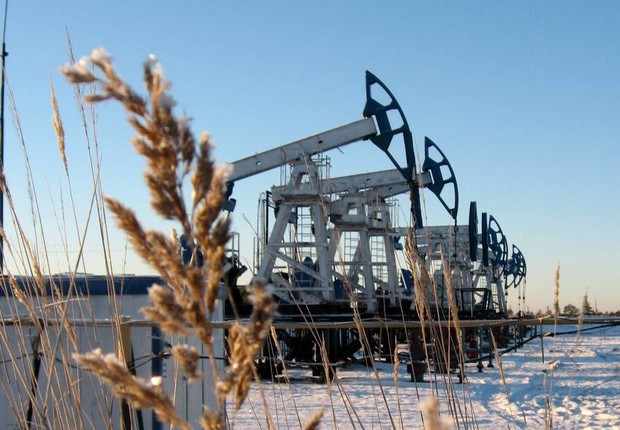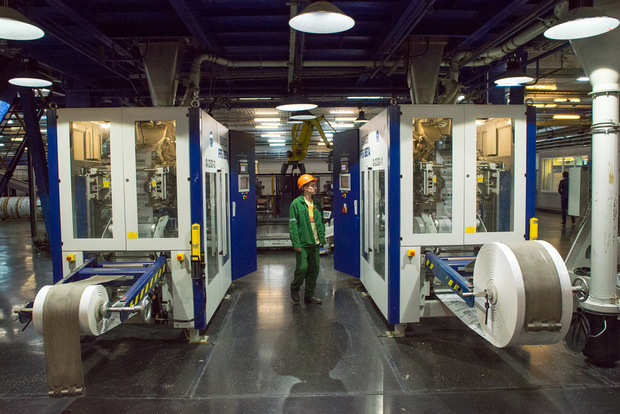Business climate-2016: HSE experts see signs of moderate optimism
HSE experts state an increase of business confidence in the industry amid sluggish forecasts of the economy development
The Centre for Business Tendency Studies of the Institute for Statistical Studies and Economics of Knowledge of the Higher School of Economics has published its latest newsletter ''Business climate in the industry in December 2016''. The main conclusion — it's not as bad as it sounds but worse than it could be.
Though modest but record
The results of the previous works of the Centre for Business Tendency Studies allow to state that last year the heads of industrial enterprises experienced all three phases of the economic cycle. Having started the year with pessimistic assessments of the condition of their own business and the resulting recessionary scenario, in the summer they tended towards stagnation estimates, and in December they began to show the first signs of a very moderate optimism.
HSE experts say that only 24% of respondents characterized the level of production volumes in December as ''below normal''. Despite apparent significance, it is the best indicator for the last 3 years, which the Russian economy is operating in a stagnation-recessionary mode. A more optimistic assessment of production volumes was observed exactly 3 years ago, in December of 2013 (23%).
The decline in production was observed in 16% of the companies whose executives were interviewed during the preparation of the bulletin, and this is the best figure for the last 2 years.
Another record of recent years is the dynamics of demand for the products in comparison with November (but the research concerns only the sentiments in December 2016): only 15% of CEOs noted a reduction in demand for their products.

In the part of labour force we can even talk about the record in the last five years: only 22% of the heads of the companies said that they had to resort to the reduction of the staff engaged in the main production. Moreover, the lion's share of respondents predicted, in the worst case, a preservation of staff at current levels, at best, their increase over the next 3-4 months.
Finally, though subtle but still positive changes in December were observed in the assessments of the current and expected financial situation of the companies — only 16% of the surveyed heads of the enterprises noted a reduction in financial resources: 6 months ago the figure was 22%.
Almost a third, 28% of the enterprises, predict in the nearest future a growth of its production, and only a 9% predict decline.
Nevertheless, despite all positive changes, only 7% of the respondents assessed the economic situation in their companies as favourable. And this, of course, is frustrating. Other good news: 76% of the respondents stated about a satisfactory condition of their companies and 17% — unsatisfactory (in November — 74% and 19%, respectively).
The main factors limiting a production growth for the ''tops'' are still three issues that have traditionally prevailed over other ones: every second noted an ''uncertain economic situation''; 47% blamed insufficient demand for the company's products within the country; 39% said about the lack of funding.

Optimists from ''processing''
The key indicator of sentiments in the industry, according to HSE scientists, is the Index of business confidence. The authors of the research noted that the index is quite conservative indicator, and in order its value changed by at least one percentage, ''more accentuated'' positive changes of the parameters are required that are listed above.
So, the study states that in general the December's picture was spoilt by the mining segment of the industry: here, the value of the index decreased by one percentage point, while manufacturing and distributive industries demonstrated, on the contrary, an increase in the index by exactly the same amount.
Everything is clear with ''distributives'', regardless of whether the economy falls or grows, demand is guaranteed for them; the question is only the solvency of a customer and revenues.
Another thing is strange: why did the index of ''the miners'' fall? In September 2016, Russian oil companies have reached the production level of 11 million barrels per day. There are no total figures for 2016 yet, but there is no doubt that this year it will be a record one in terms of production over the entire post-Soviet period. Perhaps, a decline of sentiments in the industry is due to the forthcoming reduction of oil production as prescribed by the agreement with the OPEC by 300,000 barrels per day. However, even if the agreement, as it happens many times, does not fail, it cannot fundamentally affect a positive dynamics of hydrocarbon production. After all, for the production cuts one can ''give'' the traditional for the beginning of the year decline caused by the scheduled maintenance of wells.

The optimism of the ''processers'' is not quite understandable. The first group of sub-sectors of the processing industry, mainly oriented to the demand of the population (food, textile, shoe industry, etc.) for the last 2 years has been suffering from the crisis of incomes of the population. The second group, the group of investment demand (manufacture of equipment, metallurgy, etc.) has been experiencing a decline in investment activity for the third year. HSE experts see the biggest problems in the industry of construction materials production, shrinking after the construction itself. The obvious leaders are the chemical industry and food industry, despite the fact that even the food industry has faced the limited demand for its products. Anyway, in the last 3 months of the past year in the manufacturing industry there was an increase in business confidence index.
Without fail. Without breakthrough
The experts of the Higher School of Economics have made the following conclusion: failures in the development of the industry in the next 2-3 years are not expected. Just as breakthroughs. The authors of the study predict a growth in the economy in the range of from 0.7 to 2.3% in 2017-2019, describing the trend as ''stable stagnation'': there are no big risks, however, there are also no guarantee of expansion of the accented production and considerable improvement of financial and economic state of the enterprises.
Among already traditional reasons for such ''weak'' forecast, along with an imbalance of the state budget, the ongoing crisis of personal incomes, weak modernisation and innovation activity of enterprises, etc., there is a high level of economic uncertainty. In particular, the study authors noted that, despite the need in the next 2-2. 5 years of tax reform, the owners and managers of industrial enterprises with the long investment cycle of 6-8 years lose ''orientation in space'', that is, the companies that play the defining role in the production dynamics as a whole. ''Most likely, scientists predict, they will reduce their investment horizons up to 2 years, until they define at least the basic parameters of tax reform.'' Moreover, in the first place it is the representatives of private business who will be forced to do so. What threatens them in the case of ''tax turbulence'' at least is the salary loss (in contrast to public managers). At maximum – a loss of their property.